I have an Excel Workbook with hundreds of columns to be rearranged. Having tried different approaches to rearrange those columns I have developed my own solution, because it's faster than what I have found here and elsewhere:
How to rearrange the excel columns by the columns header name
https://code.adonline.id.au/rearrange-columns-excel-vba/
My code: What I basically do is searching the header row for a certain string and copy that column to a temp/helper sheet, when done I search for the next term and so on until all categories are searched. Afterwards I copy the chunk back to the main sheet in the correct order.
edit: it is of vital importance to keep the formatting of each column, so putting everything in an array does not work, because the formatting information will be gone.
Sub cutColumnsToTempAndMoveBackSorted()
Application.ScreenUpdating = False
Application.EnableEvents = False
Application.Calculation = xlCalculationManual
Call declareVariables
iCountCompanies = lngLastCol - iColStart + 1
' Timer
Dim StartTime As Double
Dim SecondsElapsed As Double
' Remember time when macro starts
StartTime = Timer
iStartColTemp = 0
wsTempCompanies.UsedRange.Delete
' First copy all columns with "ABC"
For i = iColStart To lngLastCol
If ws.Cells(iRowCategory, i) = "ABC" Then
iStartColTemp = iStartColTemp + 1
ws.Columns(i).Copy
wsTempCompanies.Columns(iStartColTemp).Insert
End If
Next i
' Then copy all columns with "DDD"
For i = iColStart To lngLastCol
If ws.Cells(iRowCategory, i) = "DDD" Then
iStartColTemp = iStartColTemp + 1
ws.Columns(i).Copy
wsTempCompanies.Columns(iStartColTemp).Insert
End If
Next i
' Then copy all columns with "CCC"
For i = iColStart To lngLastCol
If ws.Cells(iRowCategory, i) = "CCC" Or ws.Cells(iRowCategory, i) = "" Then
iStartColTemp = iStartColTemp + 1
ws.Columns(i).Copy
wsTempCompanies.Columns(iStartColTemp).Insert
End If
Next i
' Then copy all columns with "EEE"
For i = iColStart To lngLastCol
If ws.Cells(iRowCategory, i) = "EEE" Then
iStartColTemp = iStartColTemp + 1
ws.Columns(i).Copy
wsTempCompanies.Columns(iStartColTemp).Insert
End If
Next i
Dim iLastColTemp As Integer: iLastColTemp = iStartColTemp
iStartColTemp = 1
ws.Range(Col_Letter(iColStart) & ":" & Col_Letter(lngLastCol)).Delete 'Col_Letter function gives back the column ist characters instead of column ID
' Move back to Main Sheet
wsTempCompanies.Range(Col_Letter(iStartColTemp) & ":" & Col_Letter(iLastColTemp)).Copy
ws.Range(Col_Letter(iColStart + 1) & ":" & Col_Letter(lngLastCol + 1)).Insert
ws.Columns(iColStart).Delete
'Determine how many seconds code took to run
SecondsElapsed = Round(Timer - StartTime, 2)
'Notify user in seconds
Debug.Print "Time: " & SecondsElapsed & " Sekunden."
ende:
Application.ScreenUpdating = True
Call activateApplication ' All kinds of screenupdates, such as enableevents, calculations, ...
End Sub
I am still not happy with my solution as it takes just too much time when there are more than 50 columns. Sometimes I have over 300.
Any suggestion to boost the performance?


